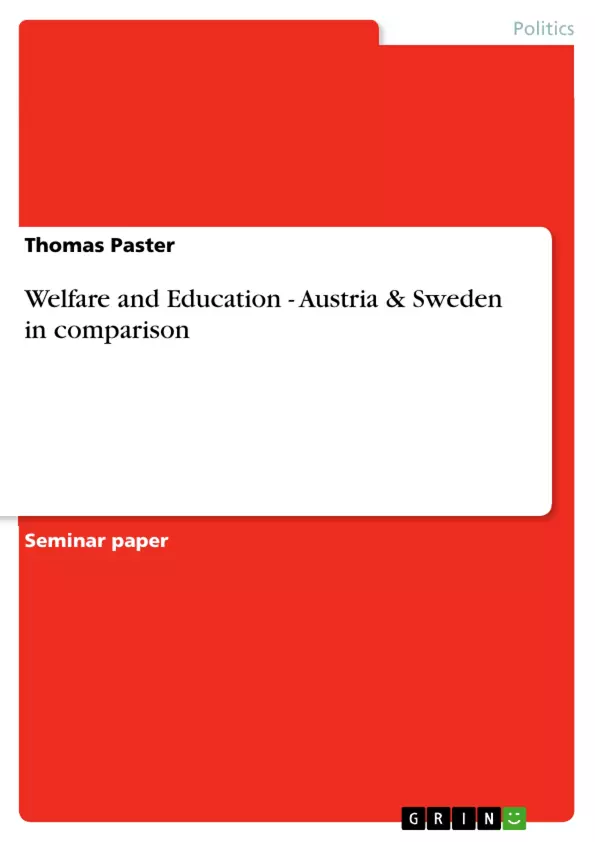The paper compares the student income situation and state support programmes to students in Austria and Sweden.
The first part will give a brief overview about the higher education systems in both countries, focusing on aspects that influence study behavior and study durations, summarizing will summarize major commonalities and differences. The second part will compare the study support systems of both countries and their influence on the study behaviour. The final part concludes.
Table of Contents
- Introduction
- The higher education system in Sweden:
- General structure
- Student enrollments
- Access and admissions
- degrees and credit point system
- Reforms of the Swedish higher education system
- The higher education system in Austria:
- General structure
- student enrollments
- entrance requirements and admissions
- degrees and credit points
- Reforms of the Austrian higher education system
- Comparison of the higher education systems
- National study support in Sweden:
- the study allowance (Studiemedel)
- study support and study behaviour
- National study support in Austria:
- the family grant
- the study grant
- study support and study behaviour
- Comparison and conclusion
- References
Objectives and Key Themes
This paper aims to compare the living conditions of students in Austria and Sweden, with a particular focus on the influence of state measures. The paper specifically examines the Swedish Studiemedel system and the Austrian study grant system. It analyzes how these systems affect student finances and study behaviour, investigating the potential correlation between financial support and shorter study periods.
- Impact of state measures on student living conditions
- Comparison of Swedish Studiemedel and Austrian study grant systems
- Influence of financial support on student study behaviour
- Relationship between financial situation and study success
- Impact of student financial conditions on the labor market
Chapter Summaries
The first part of the paper provides an overview of the higher education systems in both Sweden and Austria, focusing on aspects that influence study behaviour and durations. The comparison chapter highlights the main differences between the two systems without delving into detailed statistics. The second part examines the study support systems in both countries and their influence on study behaviour.
Keywords
This paper focuses on the themes of higher education systems, student financial support, study behavior, and the impact of state measures on student living conditions. The primary research areas include comparative analysis of Austrian and Swedish education systems, the Studiemedel system in Sweden, the Austrian study grant system, and the relationship between financial support and study success.
- Citar trabajo
- Thomas Paster (Autor), 2000, Welfare and Education - Austria & Sweden in comparison, Múnich, GRIN Verlag, https://www.grin.com/document/3535



